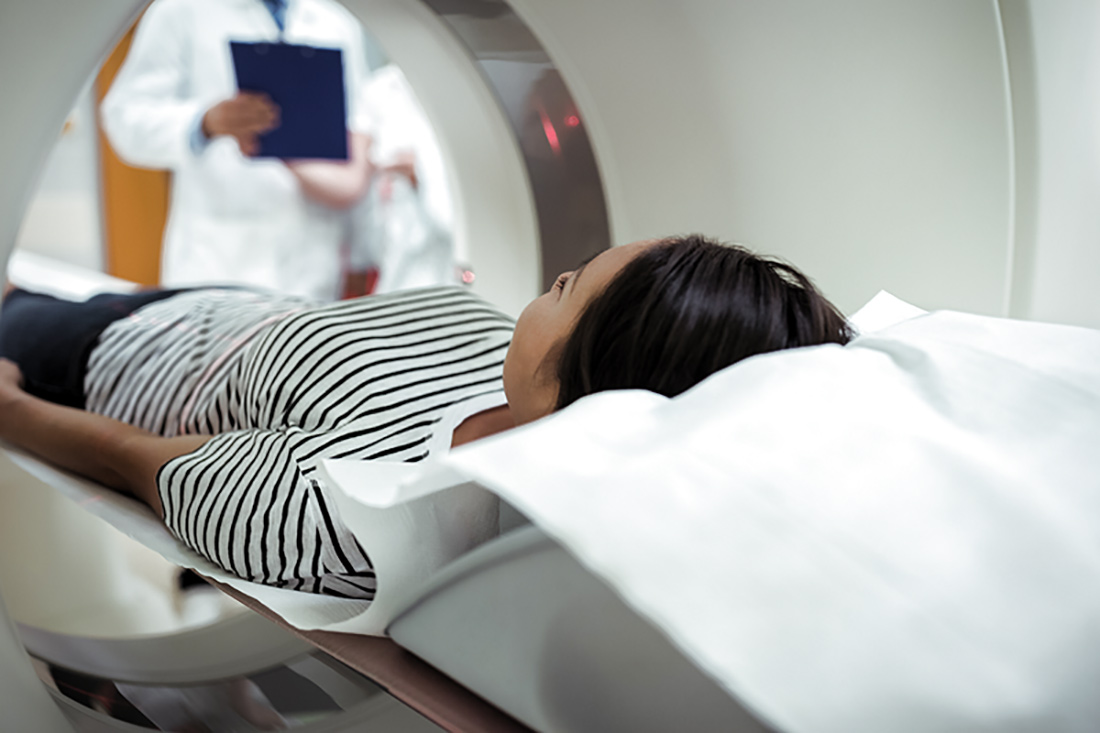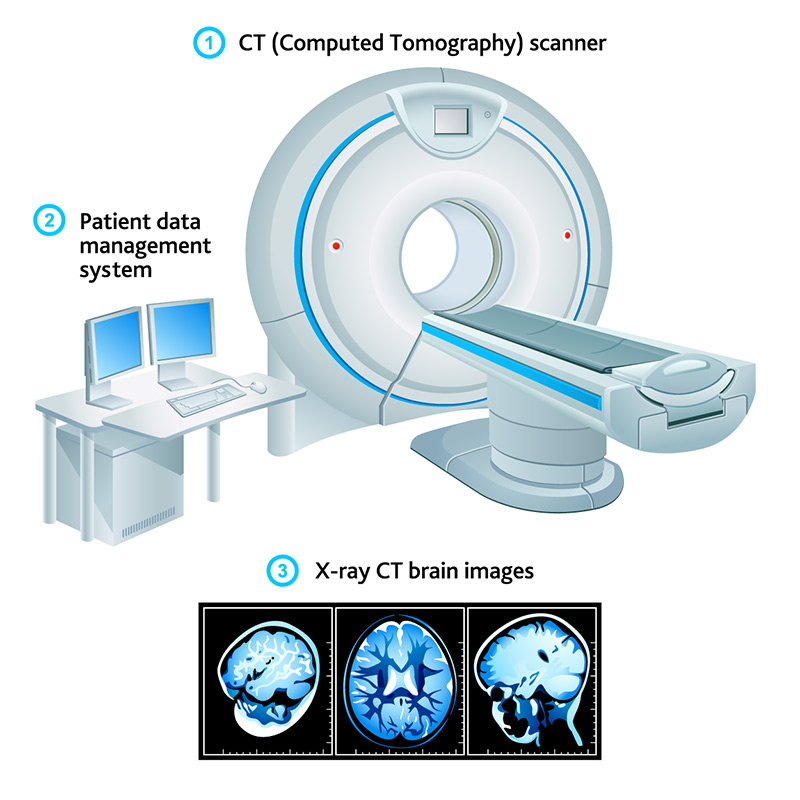
Medical science and technology have evolved at a precipitous pace and now provide us with new insights that deem past belief inaccurate. One such inaccuracy was the belief that the human adult brain could not develop new neurons. Today we know that stem cells in our brains can produce many new neurons and that the use of antidepressant medicines may contribute to the development of new nervous tissues. This insight has resulted in many new discoveries and technologies about how the brain works. It has also brought about Positron Emission Tomography, or more commonly referred to and known as PET.
"At Green Imaging the radiologist will provide the physician with the scan as well as a written report of our assessment and be easily accessible to the physician by phone for further dialog if necessary. This is not the case with other diagnostic imaging centers across the country."
--- DR. CRISTIN DICKERSON, MD
What is a PET scan?
Positron Emission Tomography (PET) is a powerful nuclear imaging method that creates detailed and computerized images of internal body organs and tissues to help physicians and radiologists diagnose and treat many internal diseases, especially cancer. The test carried out is called a PET scan, PET/CT scan or PET/MRI scan.
A PET scan is a non-invasive test that provides physicians with a complete image of how organs and tissues are functioning, thereby making it easier for them to diagnose problems, know the extent of disease that is present, recommend treatments, and also track progress with regards to healing.
What is a PET Scan used for?
The PET scan is often used, but not restricted to:
- Evaluate the use of oxygen, blood flow, glucose metabolism (i.e. how your body uses sugar) and others, which helps physicians to detect any aberration from normal functioning tissues and organs.
- Evaluate neurological and heart disease conditions, and also if any specific part of the heart has been scarred or damaged.
- Detect cancerous tissues and also determine whether or not cancer has spread to other areas of the body.
- Assess the effectiveness of a patient's treatment plan, enabling the course of care to be adjusted if necessary.
What does a PET Scan show?
While other imaging tests, like the Computed Tomography (CT) and the Magnetic Resonance Imaging (MRI) scans reveal only the brain structure, a PET scan reveals:
- How the brain and its tissues work
- How far a tumor has spread and how aggressive it is
- How well the body of a patient functions
- Areas of anomalous metabolic activity not related to tumor
- and many others
How long does it take to have a PET scan?
We tell our patients at Green Imaging centers that they should be ready to spend two to three hours at our facility for this scan. Before the imaging, there is a 60-minute relaxation period, and the PET scan itself takes about 25 to 35 minutes based on the type of scan as well as the type of scanner being used. The result of the scan will take between 24-48 hours to be complete.
At Green Imaging the radiologist will provide the physician with the scan as well as a written report of our assessment and be easily accessible to the physician by phone for further dialog if necessary. This is not the case with other diagnostic imaging centers across the country.
Is a PET scan safe?
There is some risk in a PET scan although the risk is minimal. The radiation and radiopharmaceuticals emitted decompose rather quickly, so there is no visible radioactivity typically within 6 to 12 hours after the scan has been completed.
Additionally, the remaining radiopharmaceutical is disposed of through the body by urination. That is why it is important to consume as much water as possible following a PET scan. It may, however, be suggested that anyone who has just been subjected to a PET scan should stay clear of young children, babies or even pregnant women for at least four hours following the scan. Any concern should be discussed with your physician or radiologist.
Who should not have a PET scan?
Women who are pregnant or breastfeeding should not have a PET scan as it is dangerous to the baby. It is recommended for pregnant women to consult their physician first before getting a PET scan.
How do I prepare for a PET scan?
Before having a PET scan be sure to consult with your physician and obtain instructions. Following are some instructions at Green Imaging that we provide our patients to guide and prepare them for their PET scan:
- Do not eat or drink anything apart from consuming water for about 6 hours prior to the scan. You may drink as much water as you would like.
- Inform the physician or radiologist of any medical condition that you have. If you are diabetic, you will need to obtain special instructions from the physician as fasting can affect the levels of your blood sugar. Also if you are pregnant, be sure to inform your physician and radiologist because the scan may be unsafe for the unborn baby.
- Arrive at the facility about 30 minutes before your PET scan.
- Wear comfortable, loose fitting clothing and avoid wearing any jewelry. You may also be asked to wear a hospital gown.
- At times, the physician may request lab tests before the examination.
- Other essential instructions prior to the test can be obtained from your physician.
How much does a PET scan cost?
PET scans nationally average around about $4,900 for the entire body, $6,700 for the brain and $6,800 for the heart. At Green Imaging, a PET scan can be obtained for much, much less. You can learn more why our fees are so much less by clicking here.

Positron Emission Tomography (PET) Scan vs. Computer Tomography (CT) Scan
PET scans and CT scans are related but have different imaging procedures. They are both diagnostic imaging scans that are used to examine various body organs. Both procedures are comfortable and convenient for patients as they can be performed in a single sitting without changing position.
PET and CT scans are commonly used to help detect abnormalities in various parts of the body, to assist in identifying existing cancer cells, to help in determining the appropriate diagnosis and also to determine the necessary treatment for any diseases which may be present. They are more precise compared to other invasive exploratory procedures. Though both are scanners, each has its own distinct function.
What is the difference between a PET scan and CT scan?
- A CT scan is an anatomic imaging modality that checks the shape and size of organs and body structures. A PET scan on its own examines how body organs and tissues are functioning metabolically.
- A CT scan uses a sophisticated X-ray machine plus a computer to produce an overall image of the body’s internal structure and tissues. A PET scan uses a radioactive tracer that emits positron to view organs that have problems or potential issues. These emissions from the positron-emitting molecules can be measured, and valuable functional information can be obtained.
- A CT scan is more anatomically precise compared to a PET scan as it shows all organs, while a PET scan can only reveal the areas where the tracers are used by the organs. This tracer activity indicates metabolic utilization at the cellular level, which is critical for early disease discovery.
Because PET and CT scans show different things, your doctor may usually want to combine these two scans to obtain a more detailed picture of the inside of the body, and will order a PET-CT scan.
How a PET scan works
A PET scan uses a computer, a special camera and small amounts of radiotracers (radioactive materials) to help assess a patient’s organ and tissue functions. The radiotracers are injected into a vein usually in the arm and are absorbed by the patient’s internal organs and tissues. The cancer cells pick up more since they tend to consume more energy compared to healthy cells.
Thereafter, the PET scan shows where the radioactive tracer is in the patient’s body, helping doctors to see how well the tissues and organs are functioning. If there is any change in the body at the cellular level, a PET scan detects this at the early stage of the disease often before it is even evident through other imaging tests. As an analytical tool, a PET scan is very efficient at helping to stage various cancers.
How a CT scan works
A CT scan makes use of x-rays to produce a 3-dimensional image of the inside of the body. It displays anything abnormal, including tumors. At times, a special dye known as a contrast medium is administered before the scan so as to have a more comprehensive image detail.

Does a PET-CT scan have risks?
A common risk with the PET-CT scan is radiation exposure. However, the advantages of a PET-CT scan generally outweigh the risks. If you require several CT scans or other tests with radiation, you should be sure to keep your physician informed of your scans to determine other options if multiple scans are going to be required.


